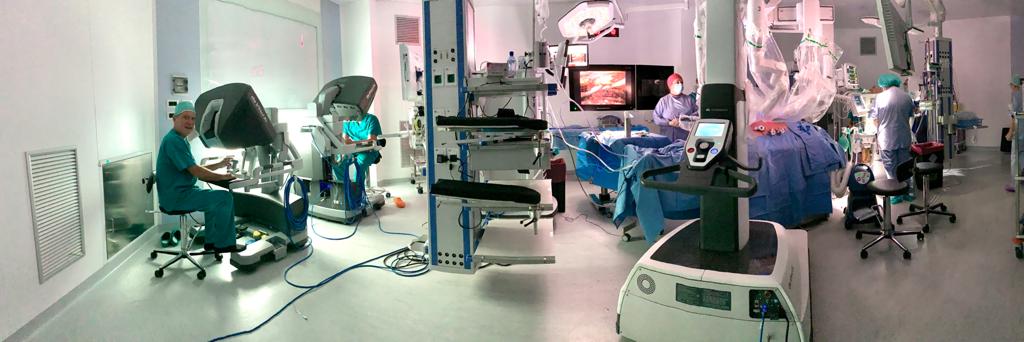Press release: The Nobel Prize in Chemistry 2020
English
English (pdf)
Swedish
Swedish (pdf)

7 October 2020
The Royal Swedish Academy of Sciences has decided to award the Nobel Prize in Chemistry 2020 to
Emmanuelle Charpentier
Max Planck Unit for the Science of Pathogens, Berlin, Germany
Jennifer A. Doudna
University of California, Berkeley, USA
“for the development of a method for genome editing”
Genetic scissors: a tool for rewriting the code of life
Emmanuelle Charpentier and Jennifer A. Doudna have discovered one of gene technology’s sharpest tools: the CRISPR/Cas9 genetic scissors. Using these, researchers can change the DNA of animals, plants and microorganisms with extremely high precision. This technology has had a revolutionary impact on the life sciences, is contributing to new cancer therapies and may make the dream of curing inherited diseases come true.
Researchers need to modify genes in cells if they are to find out about life’s inner workings. This used to be time-consuming, difficult and sometimes impossible work. Using the CRISPR/Cas9 genetic scissors, it is now possible to change the code of life over the course of a few weeks.
“There is enormous power in this genetic tool, which affects us all. It has not only revolutionised basic science, but also resulted in innovative crops and will lead to ground-breaking new medical treatments,” says Claes Gustafsson, chair of the Nobel Committee for Chemistry.
As so often in science, the discovery of these genetic scissors was unexpected. During Emmanuelle Charpentier’s studies of Streptococcus pyogenes, one of the bacteria that cause the most harm to humanity, she discovered a previously unknown molecule, tracrRNA. Her work showed that tracrRNA is part of bacteria’s ancient immune system, CRISPR/Cas, that disarms viruses by cleaving their DNA.
Charpentier published her discovery in 2011. The same year, she initiated a collaboration with Jennifer Doudna, an experienced biochemist with vast knowledge of RNA. Together, they succeeded in recreating the bacteria’s genetic scissors in a test tube and simplifying the scissors’ molecular components so they were easier to use.
In an epoch-making experiment, they then reprogrammed the genetic scissors. In their natural form, the scissors recognise DNA from viruses, but Charpentier and Doudna proved that they could be controlled so that they can cut any DNA molecule at a predetermined site. Where the DNA is cut it is then easy to rewrite the code of life.
Since Charpentier and Doudna discovered the CRISPR/Cas9 genetic scissors in 2012 their use has exploded. This tool has contributed to many important discoveries in basic research, and plant researchers have been able to develop crops that withstand mould, pests and drought. In medicine, clinical trials of new cancer therapies are underway, and the dream of being able to cure inherited diseases is about to come true. These genetic scissors have taken the life sciences into a new epoch and, in many ways, are bringing the greatest benefit to humankind.
Illustrations
The illustrations are free to use for non-commercial purposes. Attribute ”© Johan Jarnestad/The Royal Swedish Academy of Sciences”
Illustration: Using the genetic scissors (pdf)
Illustration: Streptococcus’ natural immune system against viruses:CRISPR/Cas9 pdf)
Illustration: CRISPR/Cas9 genetic scissors (pdf)
Read more about this year’s prize
Popular information: Genetic scissors: a tool for rewriting the code of life (pdf)
Scientific Background: A tool for genome editing (pdf)
Emmanuelle Charpentier, born 1968 in Juvisy-sur-Orge, France. Ph.D. 1995 from Institut Pasteur, Paris, France. Director of the Max Planck Unit for the Science of Pathogens, Berlin, Germany.
Jennifer A. Doudna, born 1964 in Washington, D.C, USA. Ph.D. 1989 from Harvard Medical School, Boston, USA. Professor at the University of California, Berkeley, USA and Investigator, Howard Hughes Medical Institute.
Prize amount: 10 million Swedish kronor, to be shared equally between the Laureates.
Further information: www.kva.se and www.nobelprize.org
Press contact: Eva Nevelius, Press Secretary, +46 70 878 67 63, eva.nevelius@kva.se
Expert: Claes Gustafsson, +46 70 858 95 21, claes.gustafsson@medkem.gu.se, Chair of the Nobel Committe for Chemistry
The Royal Swedish Academy of Sciences, founded in 1739, is an independent organisation whose overall objective is to promote the sciences and strengthen their influence in society. The Academy takes special responsibility for the natural sciences and mathematics, but endeavours to promote the exchange of ideas between various disciplines.
“The end of the beginning” è l’aforisma che meglio si adatta alla scoperta epocale in questione:finisce l’era della intangibilità del codice genetico, inizia la dinamica di intervento umano sul genoma stesso.Come per tutte le grandi svolte scientifiche il solito dilemma :è un bene o un male?
Questo mi ha chiesto mio figlia di 9 anni sentendomi commentare il bel documentario dedicato da RAI2 al metodo CRISPR/CAS9.La mia risposta è stata necessariamente generica ma vera:se lo userà uno scienziato buono sarà una cosa buona ,se lo userà uno scienziato cattivo sarà una cosa cattiva.E lei sembra aver accettato questa semplificazione.
Le ho raccontato la storia di L. figlio di un nostro amico colpito da una terribile ,rara malattia genetica.Esempio di tragedia e coraggio, impegno scientifico e disperazione, portato alla pubertà dalla forza caparbia della famiglia e di una ricercatrice visionaria che con un concime chimico per rose importato per molti mesi illegalmente dalla Cina gli ha permesso di sopravvivere sino alla svolta epocale.Oggi L. può sperare in una correzione del DNA, la stessa di cui 15 anni fa affabulavo con il padre. Entrambi in verità privi di ogni speranza.
Per noi quindi oggi è uno dei giorni più’ belli della storia.
Spero di non ritrovarmi tra 15 anni, con L. ormai adulto e sano, a dissertare di un commercio illegale di bambini procreati con manipolazioni genetiche volte a soddisfare le ambizioni dei genitori o degli stati.
Oggi che siamo felici imponiamo subito un tabù planetario:non sarà concesso a nessuno, mai,per nessun motivo manipolare il DNA della linea germinale.Potremo lavorare sul corredo genetico delle cellule somatiche ma non su quello gametico sì da non trasmettere eventuali correzioni alla discendenza.
Nel 2019 due ricercatori Cinesi hanno annunciato di aver applicato con successo il nuovo metodo di editing CRISPR / CAS9 ad embrioni umani…..due gemelli…..
